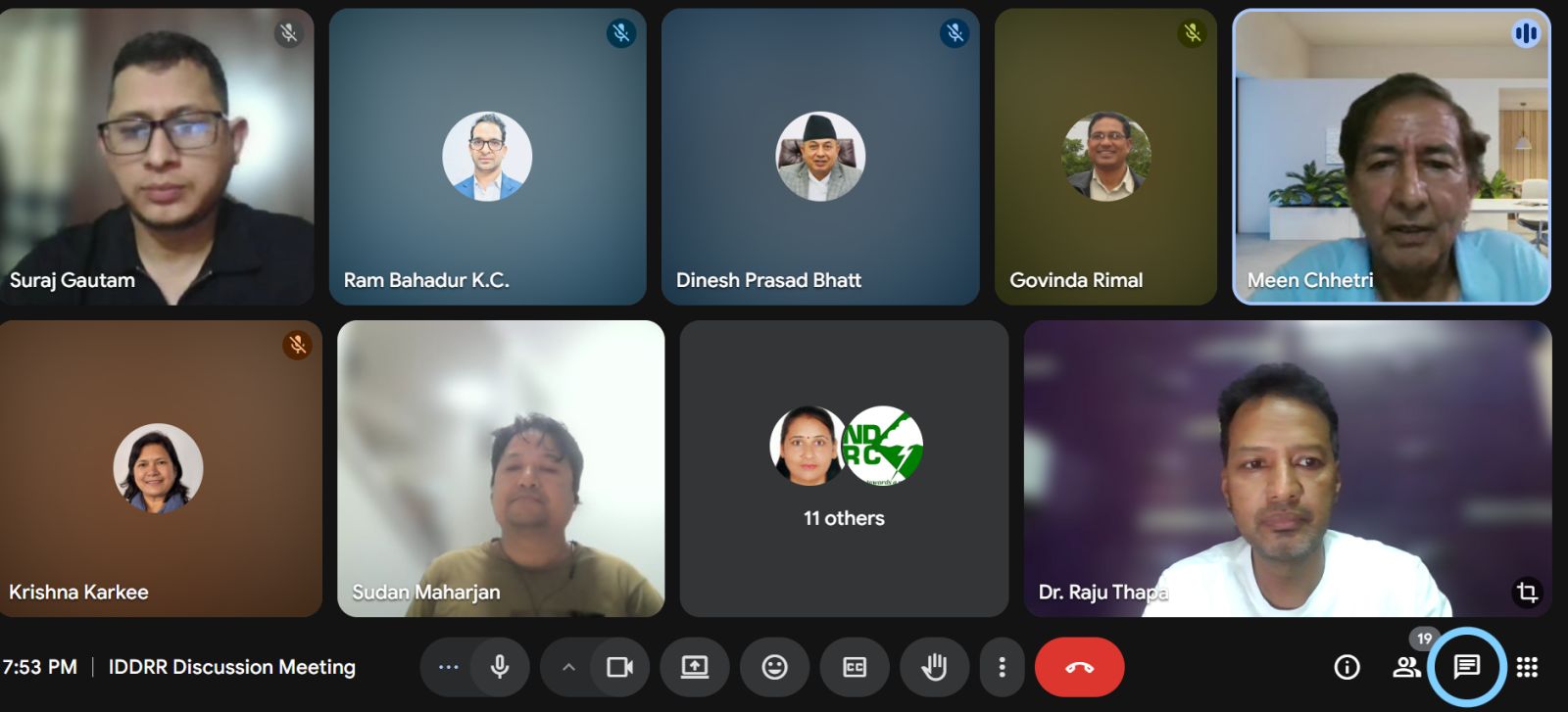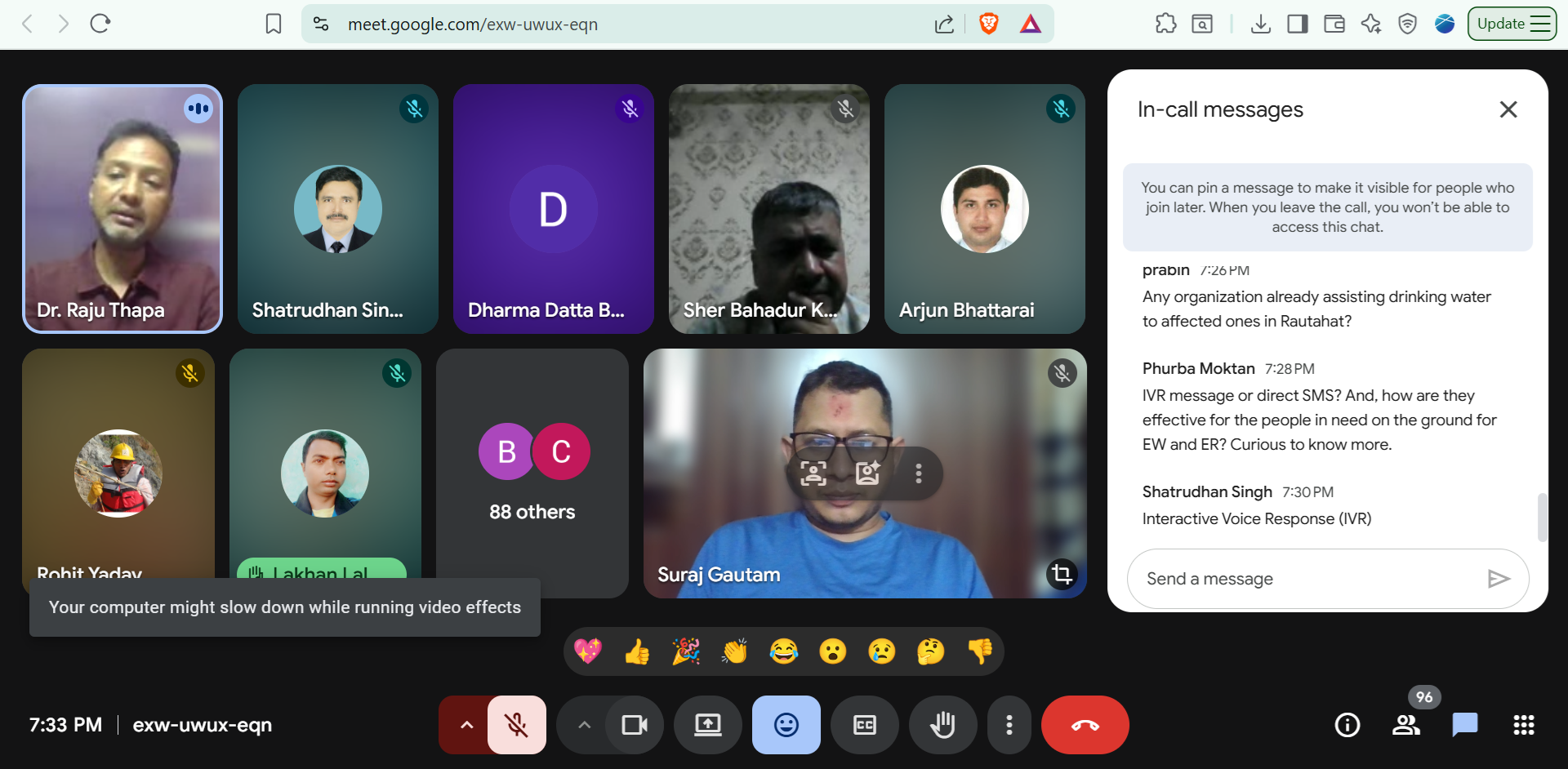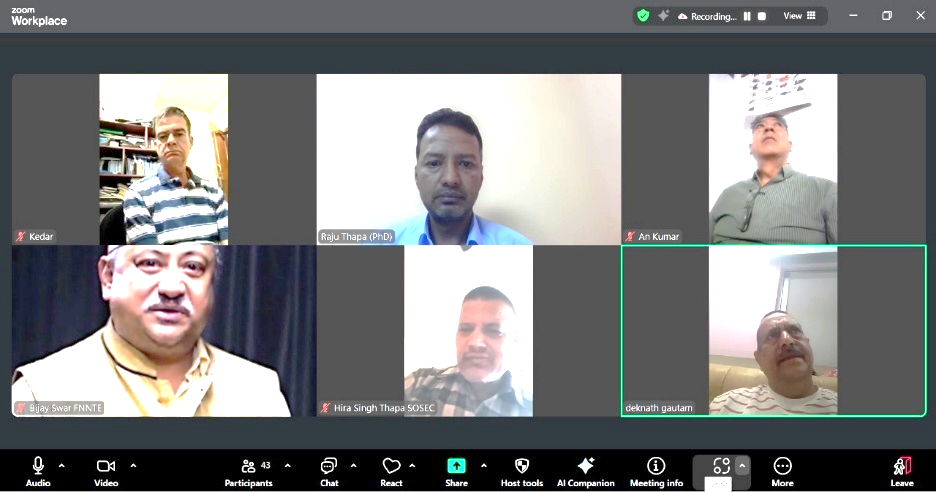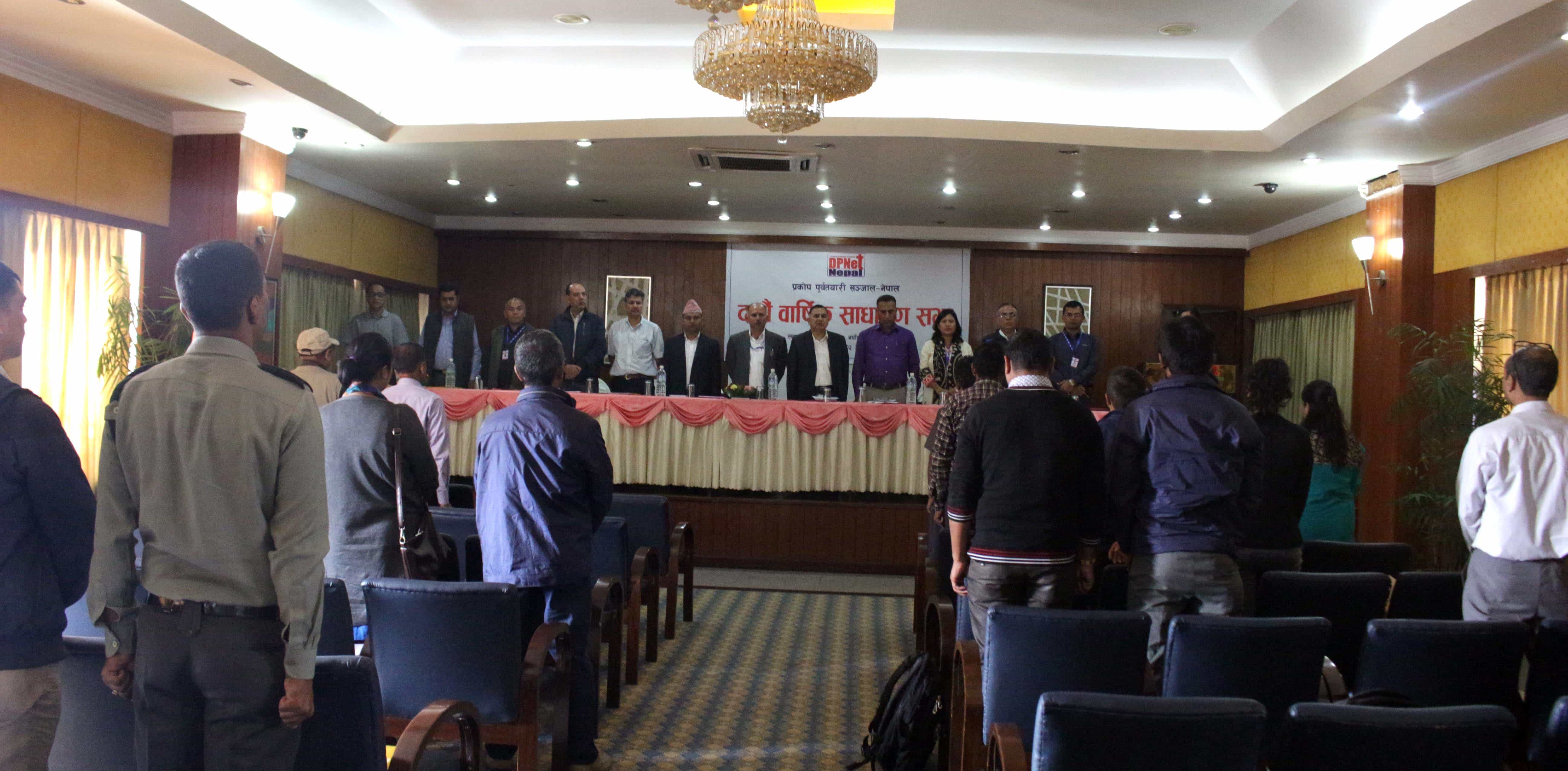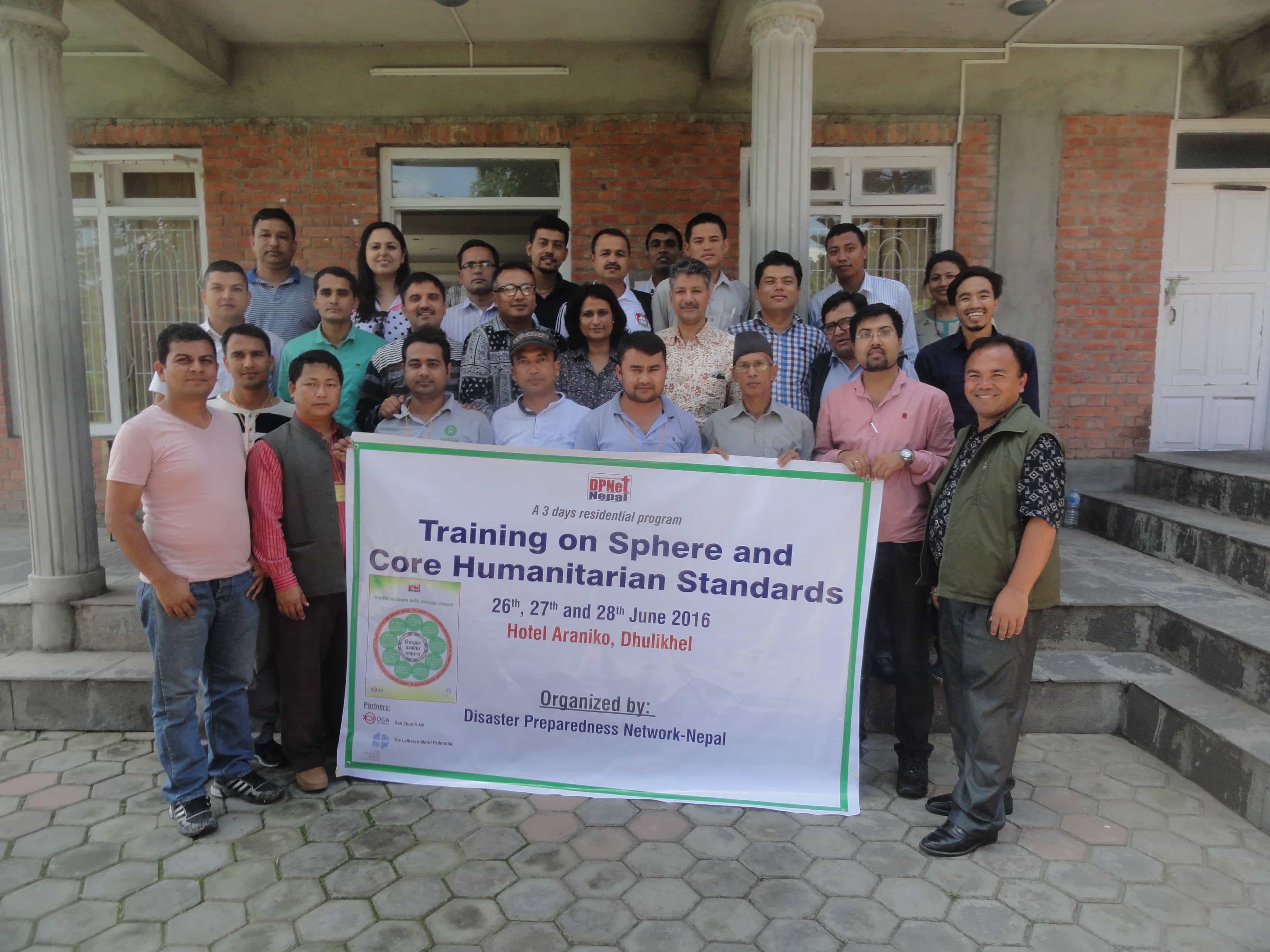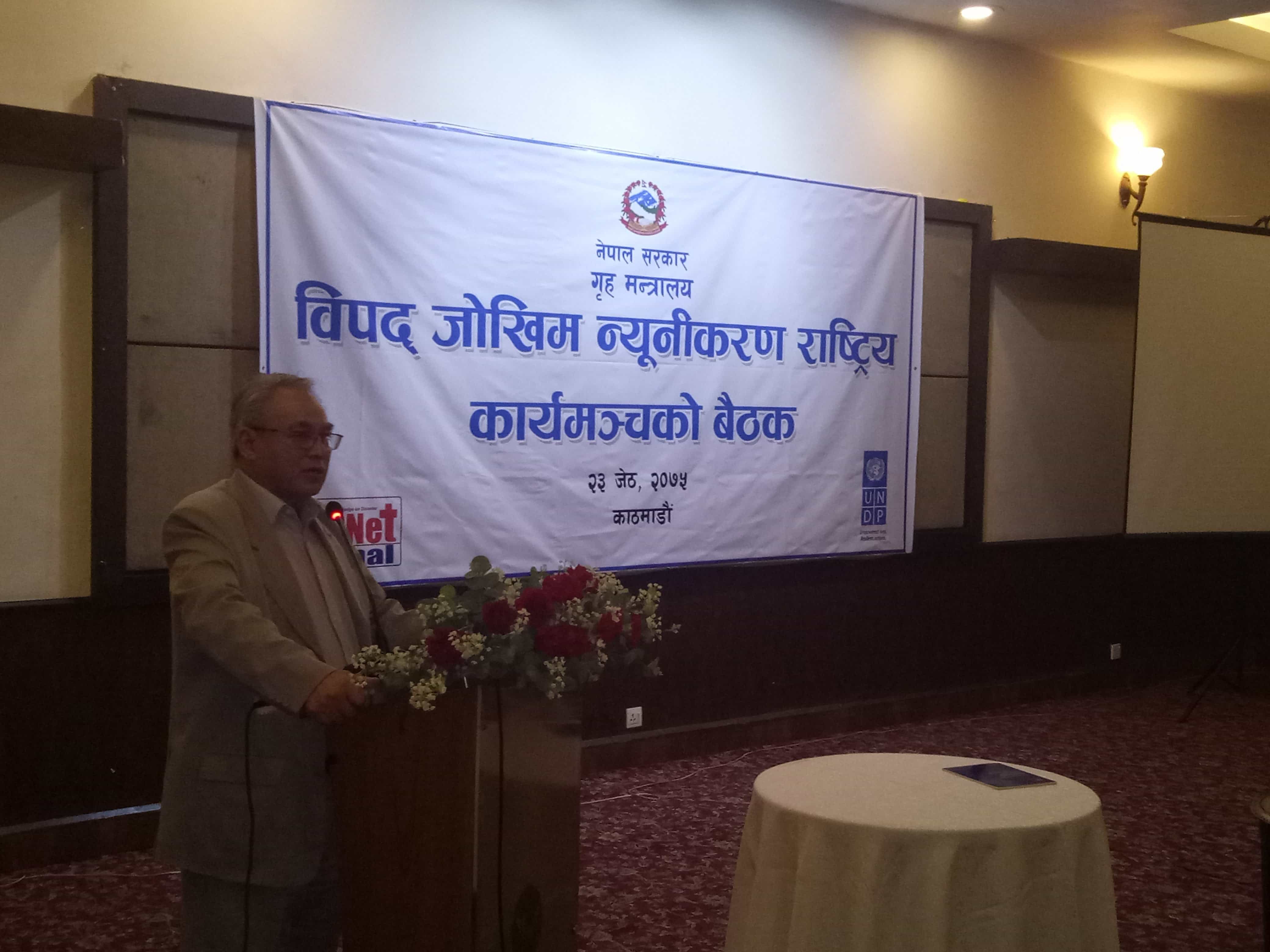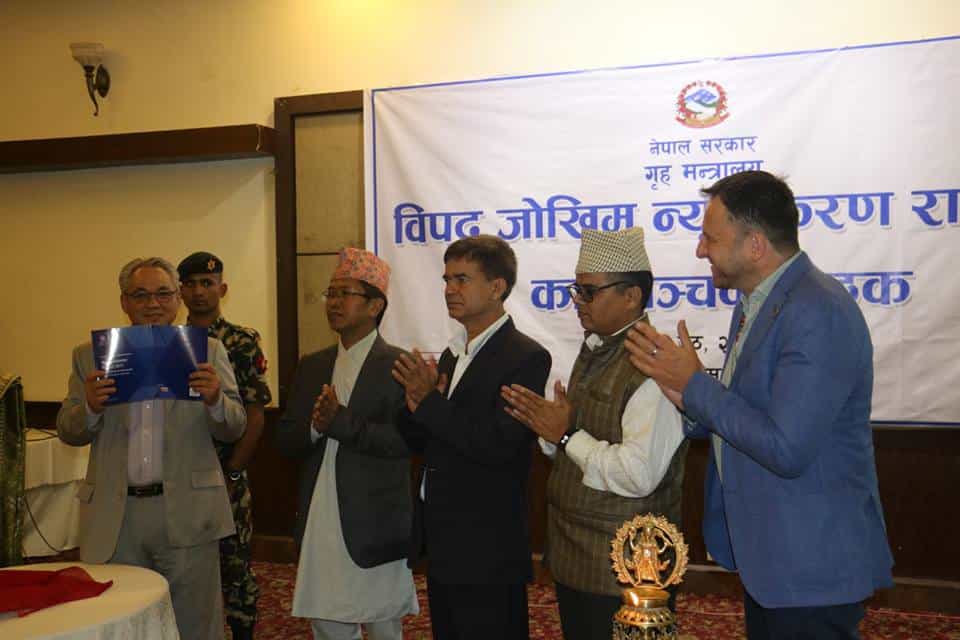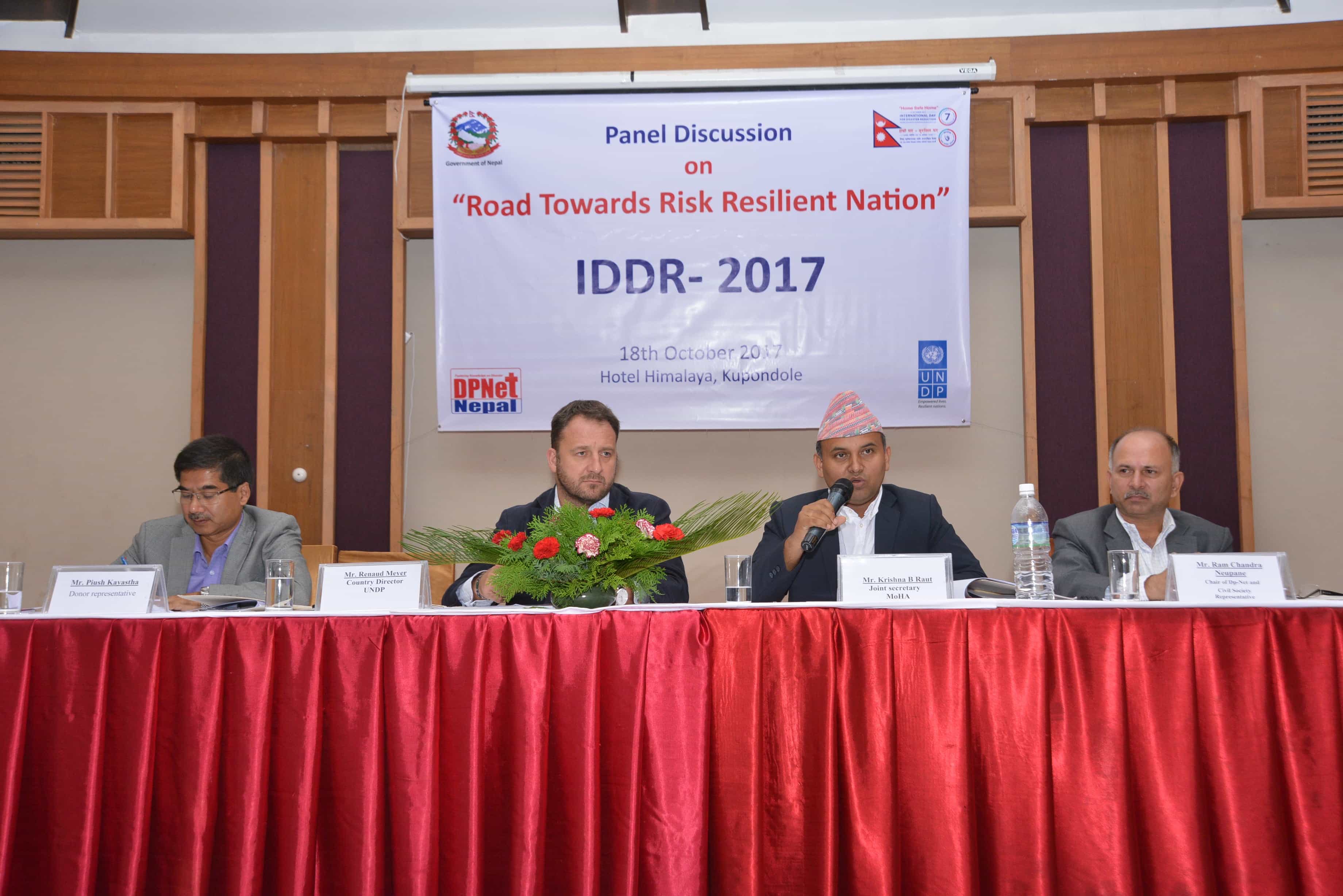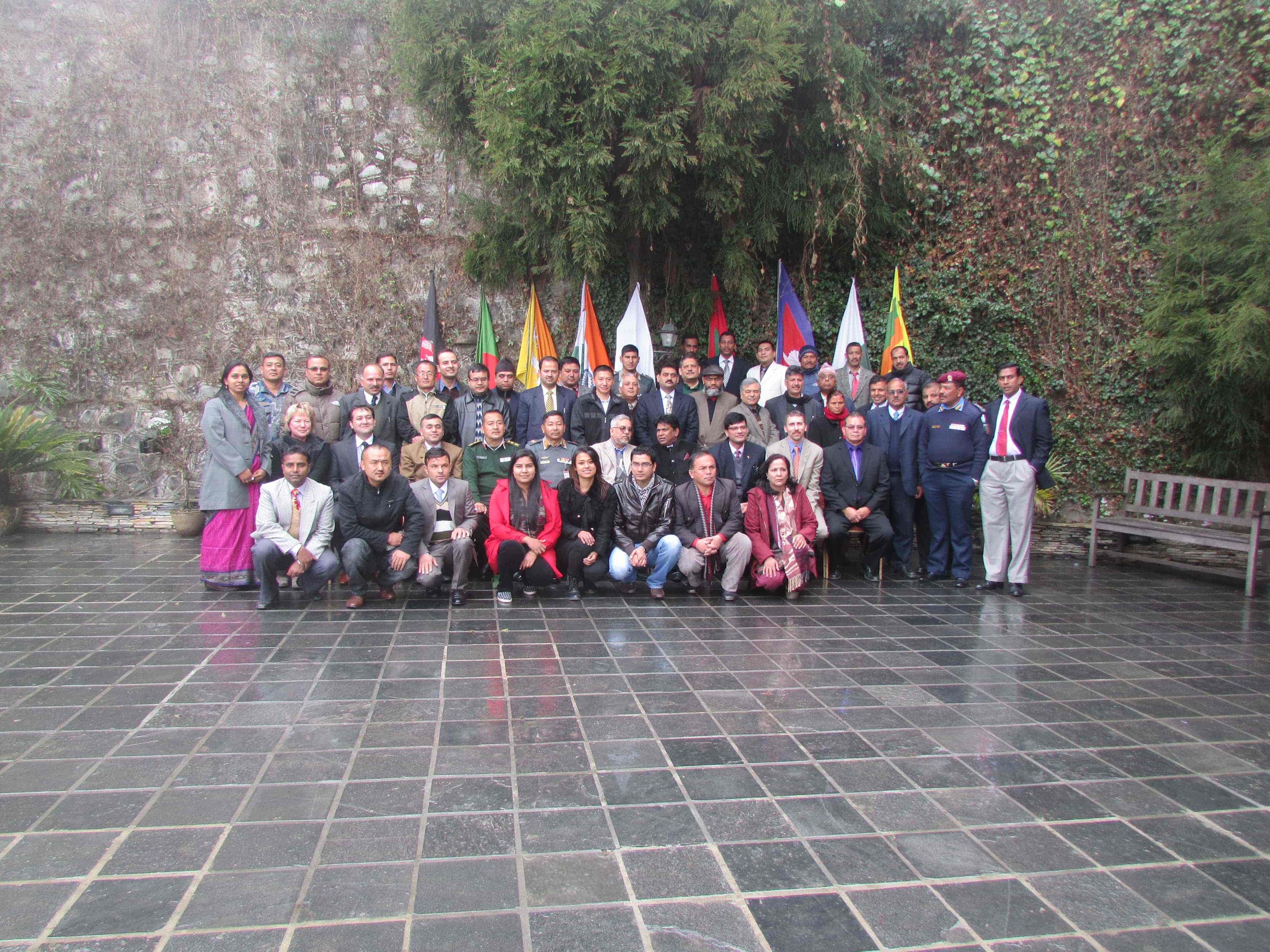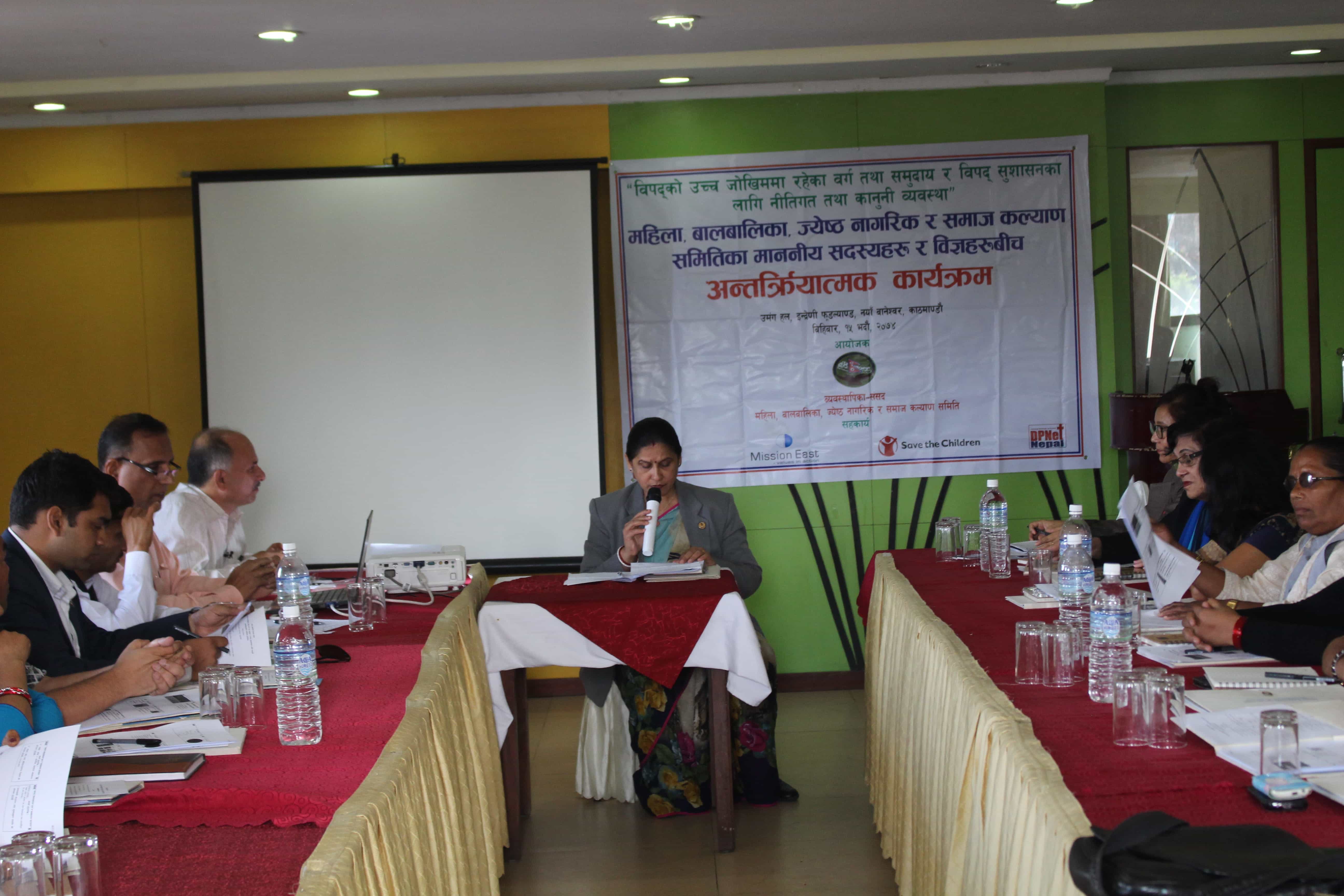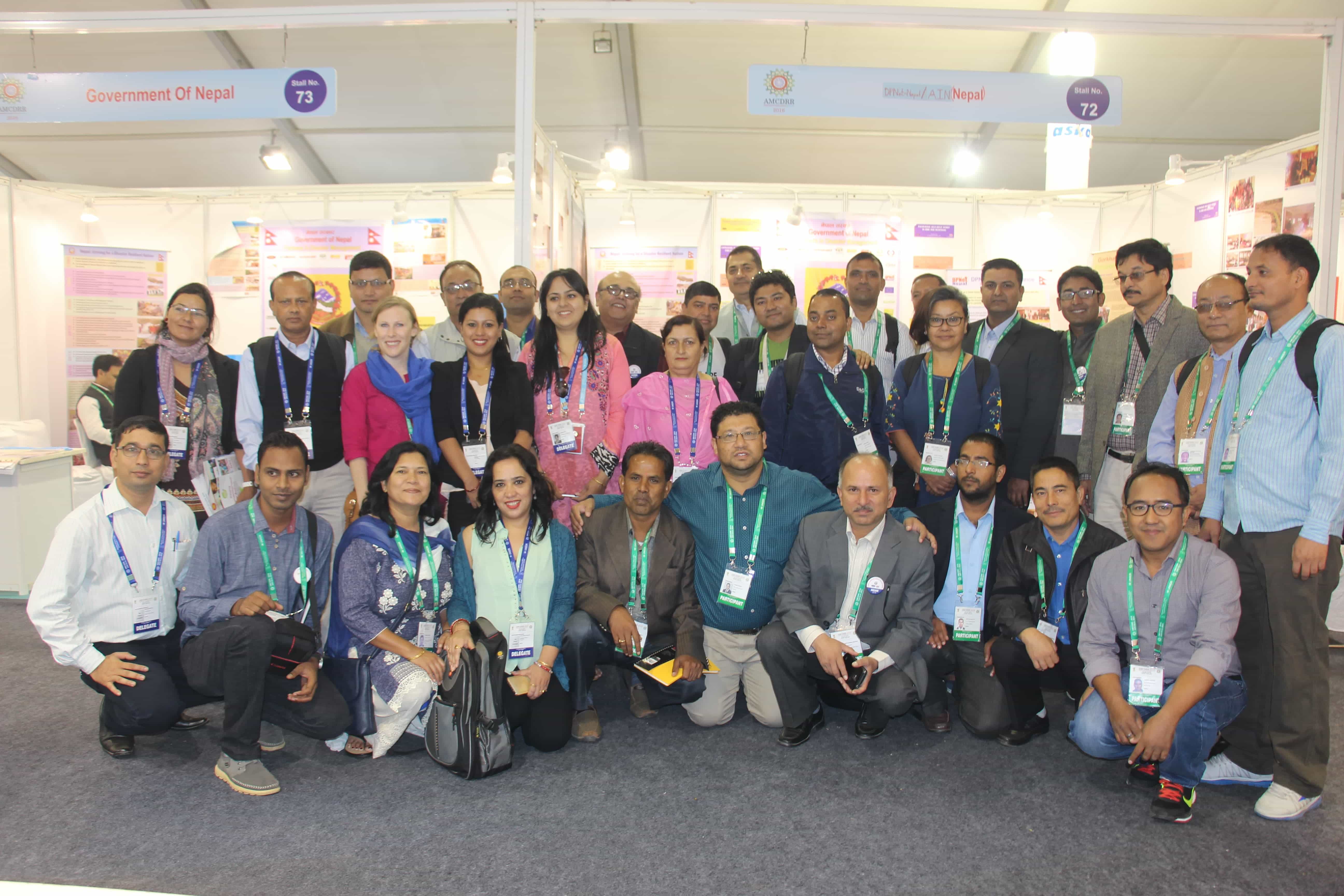Policy Dialogue for Disaster Risk Transfer and Financing
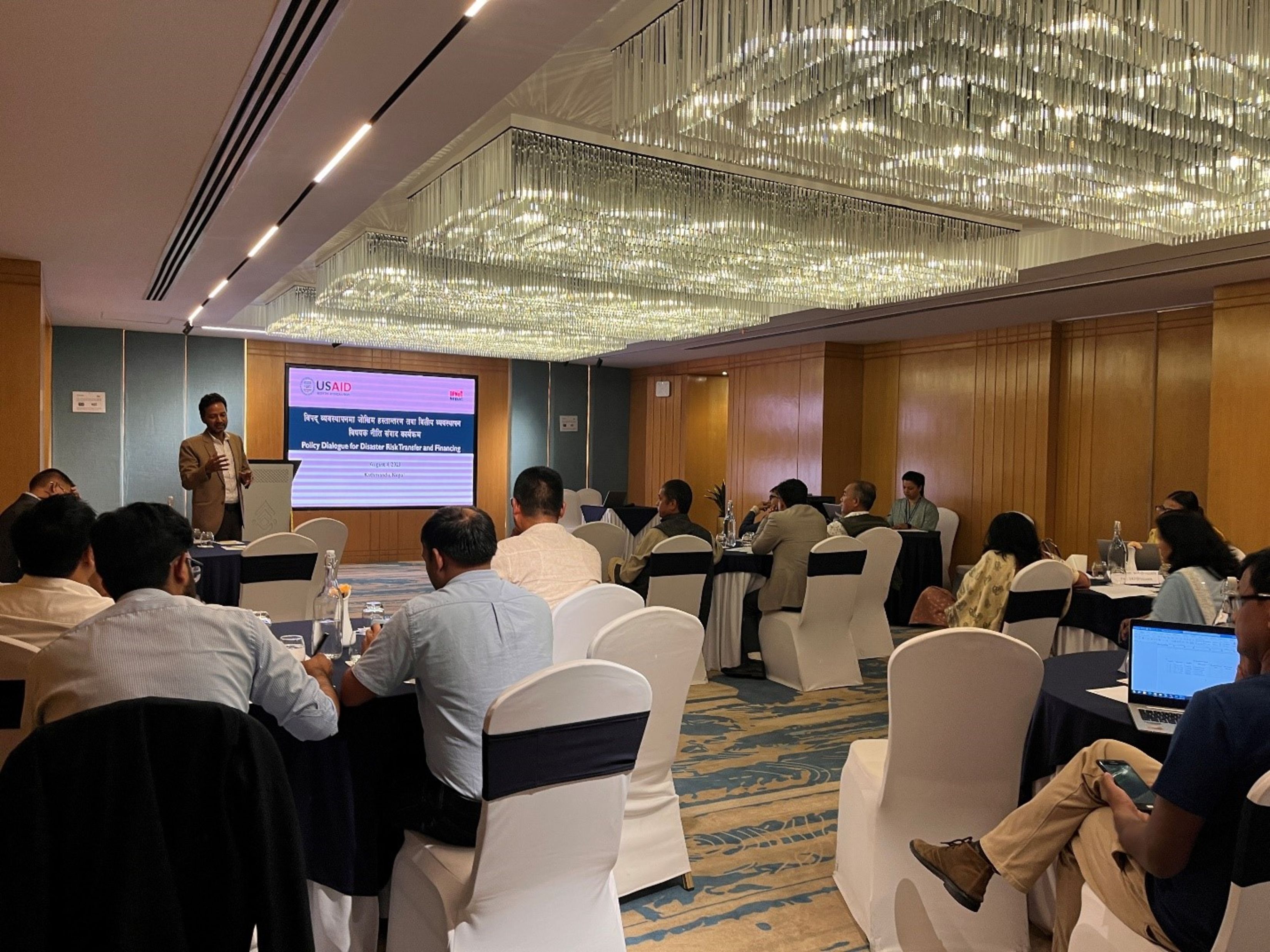
On August 04, 2023, DPNet, in partnership with USAID/Tayar, organized a Policy Dialogue for Disaster Risk Transfer and Financing. The event, chaired by Dr. Raju Thapa, Acting Chairperson of DPNet, was attended by representatives from government agencies, semi-government agencies, UN agencies, private sector, and DRR experts.
Dr. Raju Thapa, Acting Chair of DPNet Nepal and Program Chair commenced the program by addressing an issue arising from the unusual interpretation of jargon, underscoring the need for clear understanding. He directed attention toward the differences between policies and the challenges in their execution. He emphasized the complexities faced in claiming insurance payouts, particularly for farmers, leading to diminished trust. Recent reports from Baglung revealed the government's substantial contribution to livestock insurance premiums, yet only 13 people benefited. Dr. Thapa encouraged all active participation in the discussion.
Mr. Kedar Neupane, Former Secretary of the Government of Nepal explained that Nepal has encountered various disasters, excluding oceanic and volcanic ones. However, our focus remains on post-disaster rescue and relief, rather than risk transfer, insurance, and funding. He cited the 2017 flood, where uneven aid distribution due to poor post-disaster management highlighted the value of disaster insurance as a better preparedness option. Discussing COVID insurance, Mr. Neupane underscored the challenges in proper implementation during epidemics, stressing the need for clear guidelines and preparation beforehand with the aim to enhance disaster financing, especially among challenges like disaster and epidemic.
During the presentation, Mr. Nirmal Adhikari, Deputy Director of the National Insurance Authority (NIA) delivered a presentation on Disaster Risk Management in Nepal and NIA’s Initiatives and Strategies comprehensive overview of Nepal's insurance-centric strategy for DRR, emphasizing its potential to brace the nation against natural calamities to address critical challenges. He underscored NIA's crucial role in shaping policies and priorities aimed at strengthening DRRM through insurance-based approaches clarifying various funds; the Prime Minister Central DRRM Fund and Provincial, District, and Local DRRM Funds, which primarily focus on relief and recovery endeavors. He explained the distinction between the National Insurance Board (NIB) and NIA, with the latter functioning as the regulatory authority abiding by international insurance models. He elaborated NIA’s functions within the framework of the Insurance Act, including a supervising committee chaired by a government-designated official, responsible for advising on policies and guidelines. Mr. Adhikari highlighted index-based insurance models tied to weather forecasts and impact predictions, such as flood directories, satellite-based agricultural insurance, and parametric insurance. Pilots of these models were noted, particularly in Jumla for apple farming and Karnali for flood coverage. He acknowledged challenges including limited public awareness, logistical complexities, and disparities in insurance coverage. NIA advocates for multi-level collaboration among the three tiers of government, emphasizing disaster resilience as a collective responsibility. Harnessing provincial, district, and local DRM funds for risk transfer, integrating mandatory insurance programs into construction projects, and prioritizing insurance literacy campaigns were discussed as a way forward.
Mr. Bikram Rana, Project Manager for Practical Action's Index-Based Flood Insurance (IBFI) project, shared his experiences with Disaster Risk Financing, specifically the Climate & Disaster Risk Insurance (CDRI) Management Mechanism at Karnali River and Khutiya Khola, including the associated challenges and opportunities. Drawing attention to Nepal's established disaster risk financing strategy for 2020, Mr. Rana delicately emphasized the critical role of risk layering in shaping climate and disaster risk insurance. Mr. Rana insight that government compensation leans more towards subsidies rather than direct premium payments. Taking the example at Karnali, Mr. Rana states that the Department of Hydrology and Meteorology's (DHM) indicated threshold level in Karnali served as an entry point for program participation. Further, the positive outcome of 2022 emerged as the project gained approval from the National Insurance Authority (NIA), continuing in the enrollment of 935 farmers who experienced insurance payouts tied to increasing water levels. In 2023, the program also expanded to Khutiya and the program has presently engaged 4278 farmers in Karnali. The presentation also explored challenges faced, including underutilized subsidies in agriculture insurance, inclusivity of marginalized communities, the integration of insurance programs with broader development and disaster activities, and the need to harness flood resilience measurement for communities. Mr. Rana acknowledged the challenge of extending insurance on a broader scale while maintaining an economically feasible cost structure.
Following the presentations, an open discussion underscored the importance of using disaster funds for insurance and risk reduction to safeguard vulnerable communities. The need for an awareness campaign to promote insurance literacy, particularly in rural areas, was emphasized. The participants deliberated on strategies to attract insurers to rural regions and enhance coverage for vulnerable populations, aiming to reduce access disparities. The discussion recognized the significance of collaboration between government tiers to support insurance policies, including the allocation of grants for Index-Based Flood Insurance. The participants stressed the necessity of strengthening insurance regulation and supervision to ensure transparency and fairness. During the dialogue, the simplification of insurance schemes related to agriculture and disasters emerged as a key area of discussion to increase accessibility and user-friendliness. Ultimately, all participants through a common commitment paper agreed to work towards implementing comprehensive disaster risk transfer and financing policies that encompass every stage of the disaster cycle, including preparedness, response, and mitigation, going beyond mere recovery and relief efforts.
During the closing session, Dr. Raju Thapa, Acting Chair of DPNet Nepal and Program Chair recognized the significance of collaboration between multi-stakeholders for implementing comprehensive disaster risk transfer and financing policies and making the process much simplifier so that more people can get benefited from the scheme. He also emphasized exploring alternative risk transfer methods alongside traditional insurance. He expressed a vote of thanks to all participants for their valuable presence.
